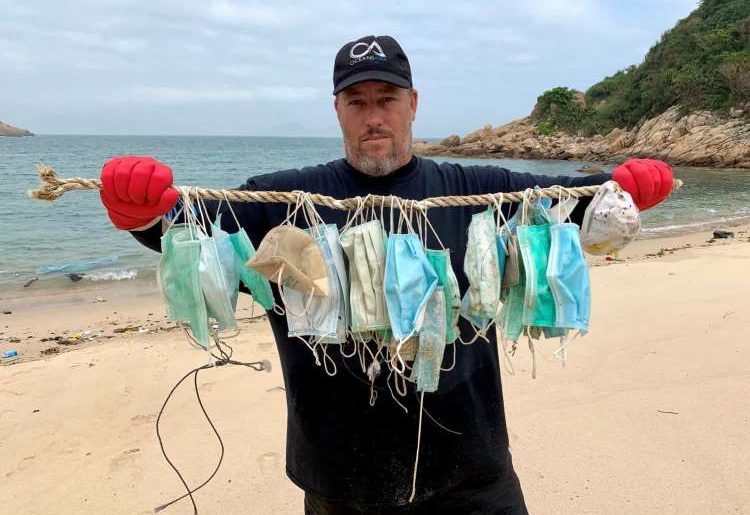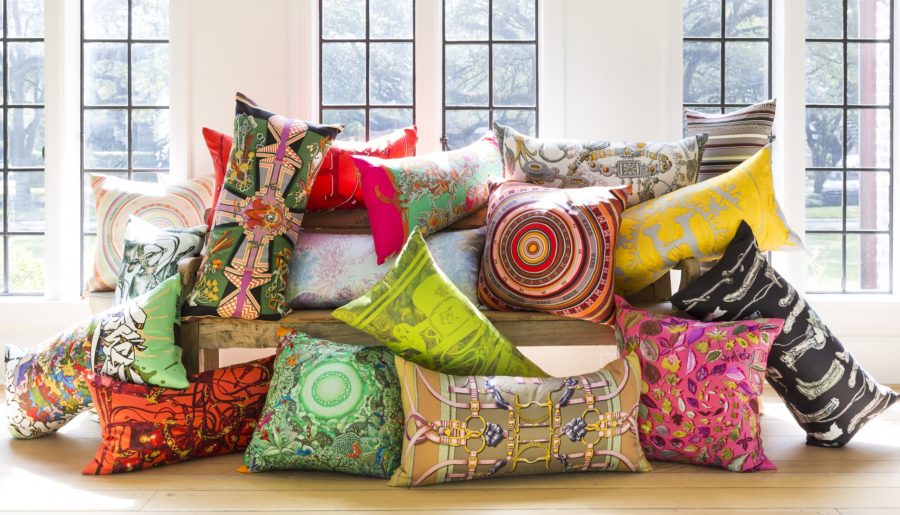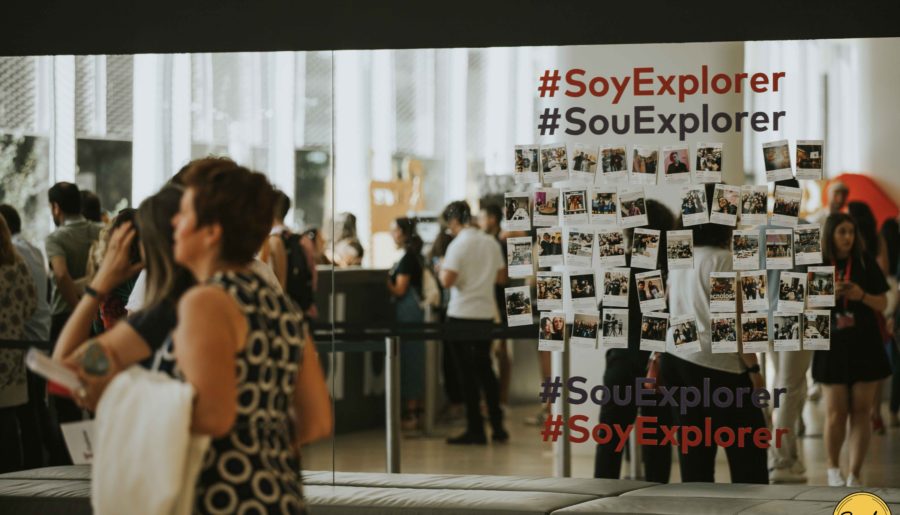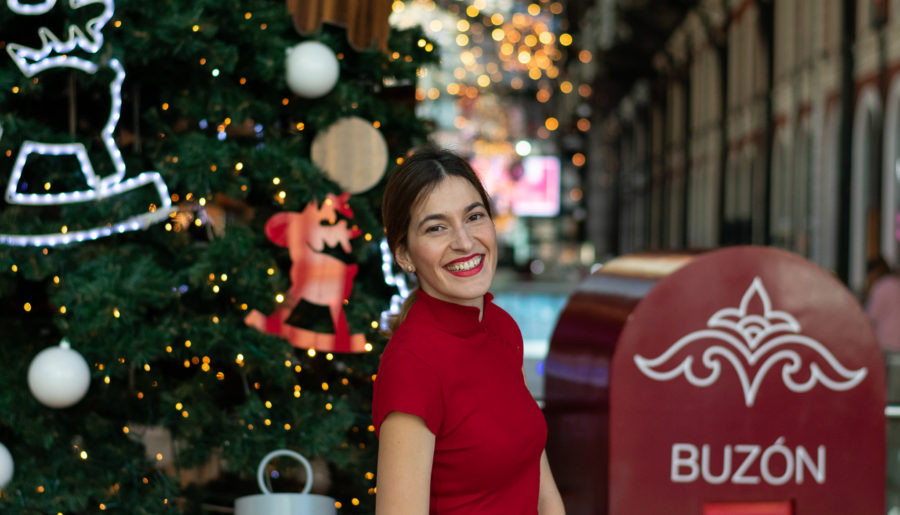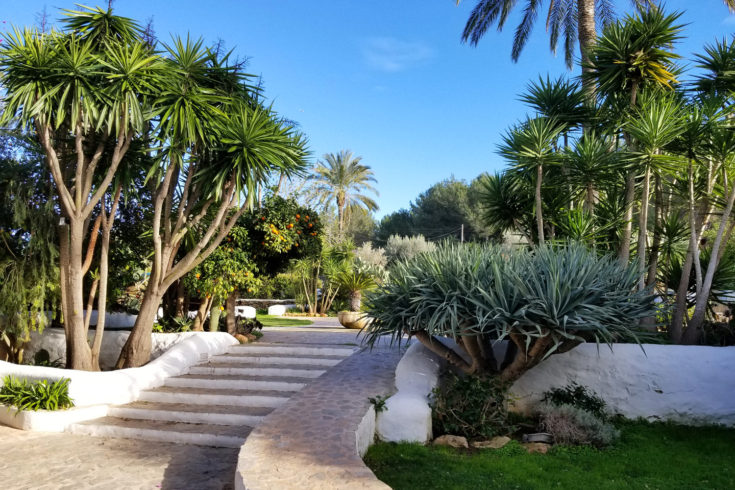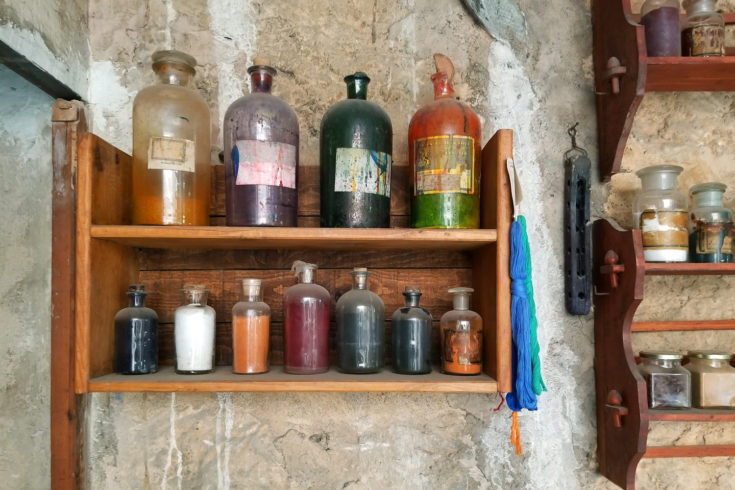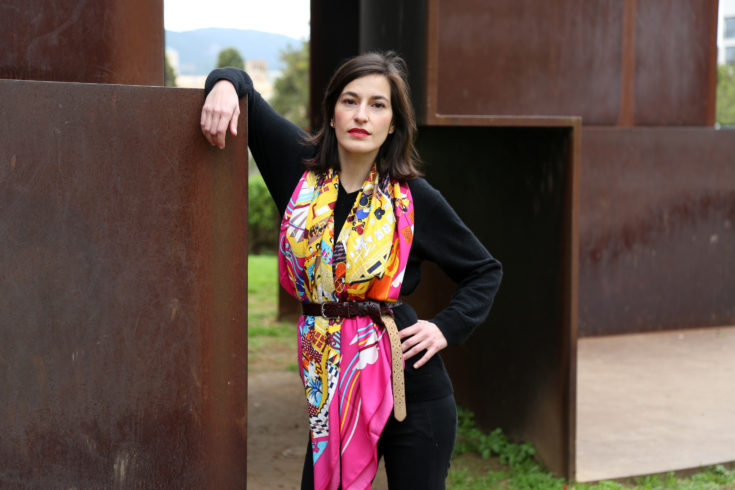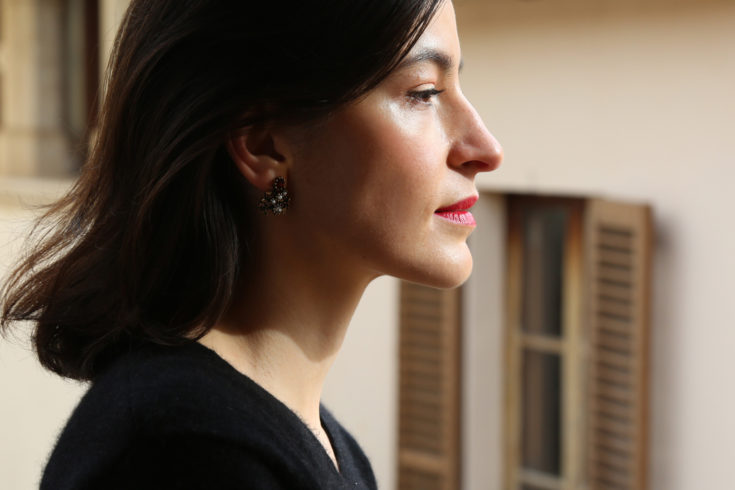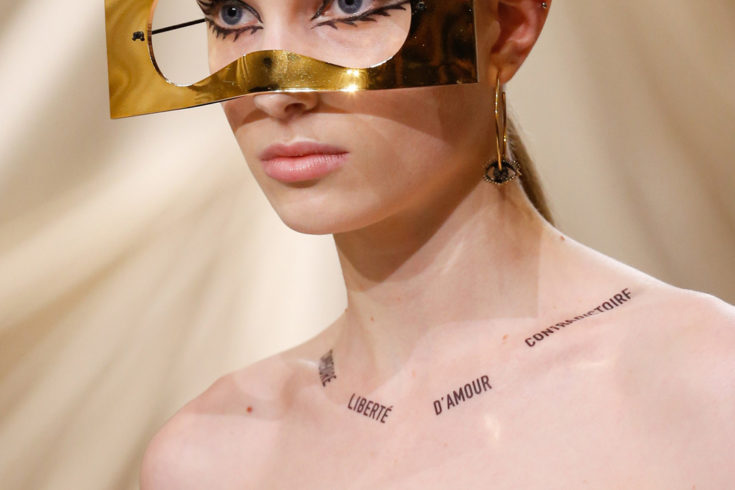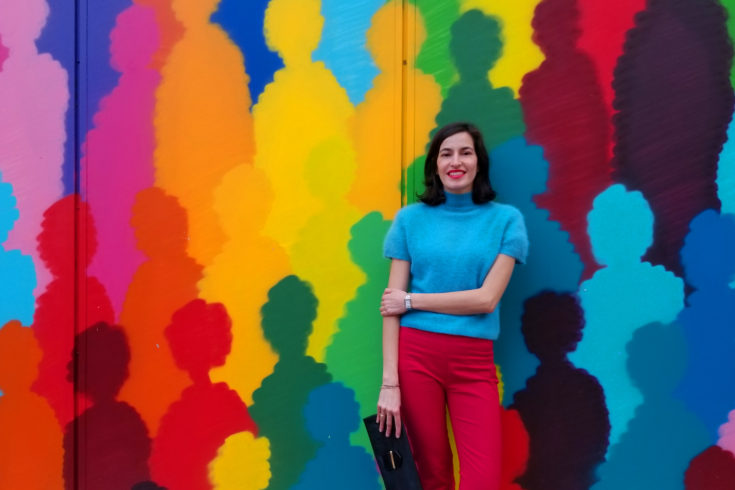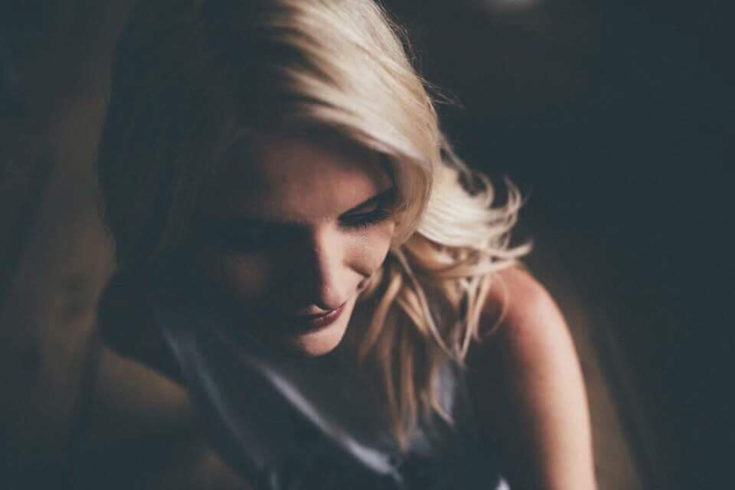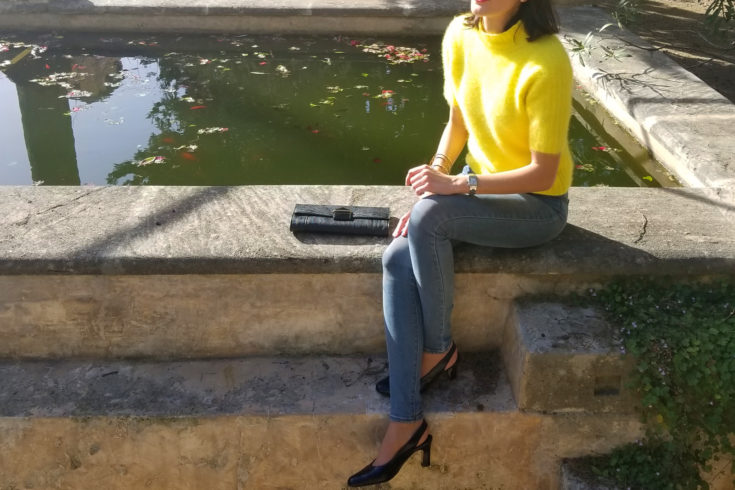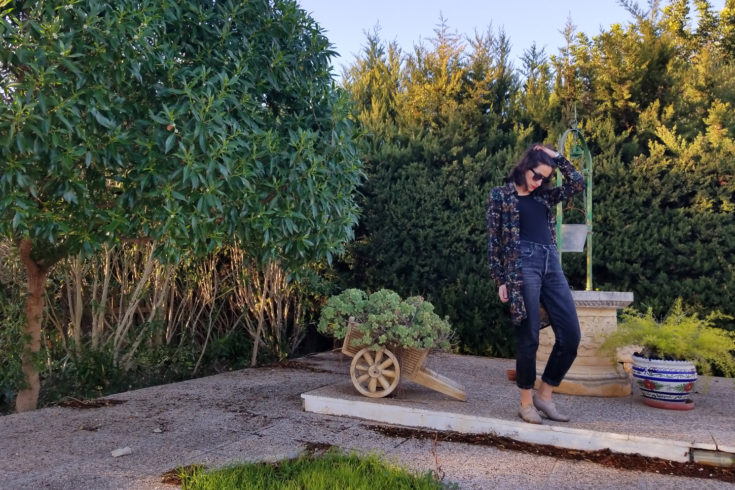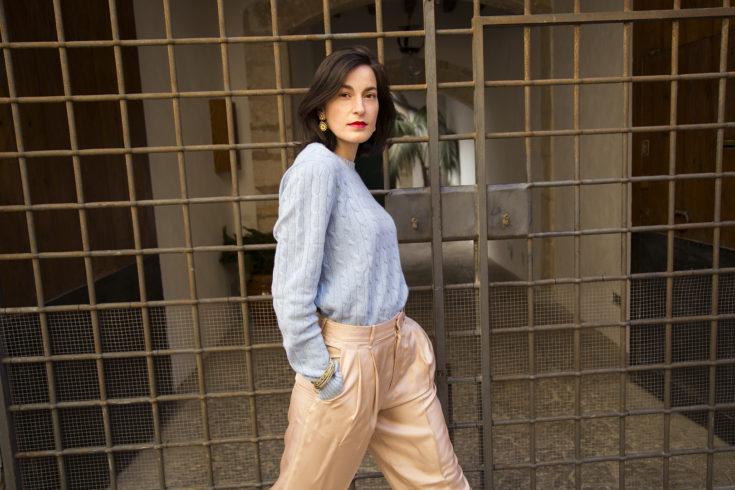Hi guys! I just come back from Ibiza and I am so excited to share with you my long weekend on the island. Ibiza is one the biggest holiday destination in Europe, known for its legendary wild parties and their hippie residents, but visiting the island during the winter season is a completely different experience! The place is quiet and peaceful, actually most restaurants and shops are close, and during this time of the year the experience revolves around the nature and the energy of the place.
A couple of weeks ago, I visited one of those magic spots that seem to live in a timeless place where past and present merge without distinction. A small textile workshop in the center of the island (Majorca, for those who are new to the blog) where they produce textile using the most traditional techniques. During the 19th century there were many factories in Majorca producing textiles, unfortunately nowadays there are just two small workshops left. A growing interest in this crafted product is, gratefully, guaranteeing the survival of these two spots. I visited Bujosa Textil, a third generation family business, that show me their secrets and here I share them with you.
In my latest post I analyzed some of the trends seen in the Paris Haute Couture (if you missed it, you can check it here) and one of those trends is accessorizing. Meaning that every look could be improved with the right accessories, and when talking about accessories scarf is the king!! A blank canvas where the artist can express their creativity. A timeless piece that can be worn regardless your age and style and that it’s being worn by all the stylish women throughout history, from actresses and singers to queens.
Imagine owning pieces of Marie Antoinette jewel’s? Or borrowing La Peregrina from Liz Taylor’s collection? And what about having access to María Félix extravagante pieces? Great jewelry are timeless pieces that pass from generation to generation and are reserved for very few lucky women. Thanks to a local Spanish artisan this dream could become true and your dream of owning an historical jewel could be more accessible than you think.
6 Paris Haute Couture trends that you can apply to your sustainable wardrobe
January 29, 2018Paris Haute Couture week just finished and I have done a review of the upcoming trends. As you probably know, Haute Couture is on the most exclusive side of fashion. One of a kind custom-fitted pieces that will last forever, but often at price well above the affordability of the general public. However, there are a few tips I have picked up, that we can apply to our sustainable wardrobe.
Hi there! I was very busy the last few days to write in the blog, but I didn’t want to miss the opportunity to share with you this beautiful sustainable outfit with you all! As I mentioned last week, I just got two super delicate vintage angora sweaters during sales, you can check the other one here, and I have rushed to wear them both!
Slow fashion conversations – Josephine Raun
January 23, 2018Josephine is one those multitasking women that seem to be able to deal with everything. She is a slow fashion blogger, vintage store owner, creative director of her own brand and recently become the Fashion Revolution representative for Denmark. A few months ago I came across her work and invite her to share her experience and knowledge on the blog. I hope you like it!!
I must confess that I haven’t resisted the sales and a few days ago I bought a couple of vintage jumpers. As you know, I have spent most of the winter borrowing jumpers from my husband’s closet, which I love, as you can see here, but I wanted something a little bit slimmer and more feminine! It was love at first sign with this angora jumper!
I started this blog over nine months ago with an article about the 30 wears challenge and I was wearing this same dress. After almost a year of trying to dress and live in a more sustainable way, I would like to bring up the optic again. In 2015 Livia Firth, the founder of EcoAge, started a movement in which she challenged people to stop consuming fashion as a disposable good. The way to proceed is first, by wearing the clothes we already owned at least 30 times before getting rid of them and secondly, by asking ourselves if we will use something 30 times before purchasing it!
Lately, my biggest obsession is about clothing composition. The material from which clothes are made is of significant importance when I acquire a new garment and I love the natural “noble” fibres, such as cashmere, linen or silk, well, who doesn’t? I guess the reason for this obsession is that in my experience the clothes made out of this materials are the ones that end up lasting the longest. My mother has passed me down amazing leather accessories or beautiful silk shirts, whereas most of the plastic based clothing ended up being discarded! When purchasing preloved clothes, I am prepared to pay a little extra for high-quality garments, which are usually produced from natural fibres.

